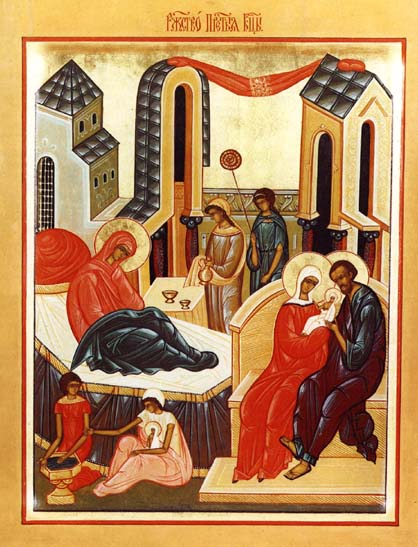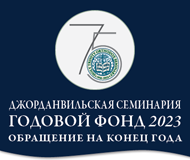News

Nativity of our Most Holy Lady the Theotokos and Ever-Virgin Mary
12:00 PM
The Eastern Orthodox Church starts the count of the yearly circle of the feasts with the Nativity of the Mother of God and closes it with Her Dormition.
“She is the flower that budded forth from the barren and old womb of the dry tree, – is said of the Mother of God in the Lives of the Saints, – the flower that withers not, ever blooming with virginity, a fragrant flower, giving birth to the sweet fragrance of the One King, the flower bringing forth the fruit – Christ the Lord God, the only sweet smelling apple” (September, day 8).
The details of the Nativity of the Ever-Virgin, adopted by iconography and the order of the festive service, are contained in the Sacred Scripture, the essence of which is transmitted by the so called “Protevangelium” of James the brother of God. The content of “Protevangelium” is found in the Lives of the Saints of St. Demetrius of Rostov.
“In the records of the twelve tribes of Israel was Joachim, a man rich exceedingly,” – says the “Protevangelium” of James. When the feast arrived once again, and he brought before the Lord generous gifts and offerings, one from the tribe of Ruben stood before him and reminded that Joachim, as a man with no offspring, should not come with first offerings because “he didn’t produce a first born in Israel”. Joachim was exceedingly vexed; he didn’t return to his wife Anna, but went into the desert and there set up his tent. Then, he fasted for forty days and forty nights, saying to himself: I shall neither turn to food nor drink, until the Lord my God will look upon me. Prayer shall be my food”.
Meanwhile, Anna’s maid tried to comfort her bitterly weeping mistress, but having heard: “Leave me!”, herself got offended: “Who am I that I should hear such a thing from you?! The Lord shut your womb, willing that your offspring be not accepted in Israel”. As we can see, the Lord’s choice demanded that the righteous couple humble themselves in the face of scorn, – for, in the words of the One, Who will soon come and be their Daughter, the Creator “sent the rich empty away”, however He heard the tearful and broken prayer of Joachim and Anna.
As the most ancient – partly written – sources, that mainly came to us from the apostolic century, state, the parents of the Most Holy Virgin owned a home in Jerusalem not far from the Sheep’s Pool, where, later, the Lord healed the paralytic, who was bound to his bed for thirty eight years.
A great basilica was erected at the place of this home, the memory of its location was passed down by the Palestinian Christians from generation to generation, during the Byzantine times; according to many archaeologists, this church at once covered both the home of the righteous God-parents and the Sheep’s Pool.
After the Third Ecumenical Council in Ephesus, when the tradition regarding the Nativity of the Ever-Virgin enter the service books of the church, the home of Joachim and Anna became known to the majority of the communities of the faithful. The Council took place in the year 431 AD, and by the end of the fifth century, the Nativity of Mary began to be celebrated in Jerusalem: specifically in the church at the place of the home of the holy God-parents, St. John of Damascus gave his Divinely inspired Homily: “The Day of the Nativity of the Theotokos is the feast of joy for the entire world because the entire race of men was renewed through the Theotokos… She is entirely the abode of the Spirit, entirely the city of God, entirely good, entirely God’s neighbour”.





